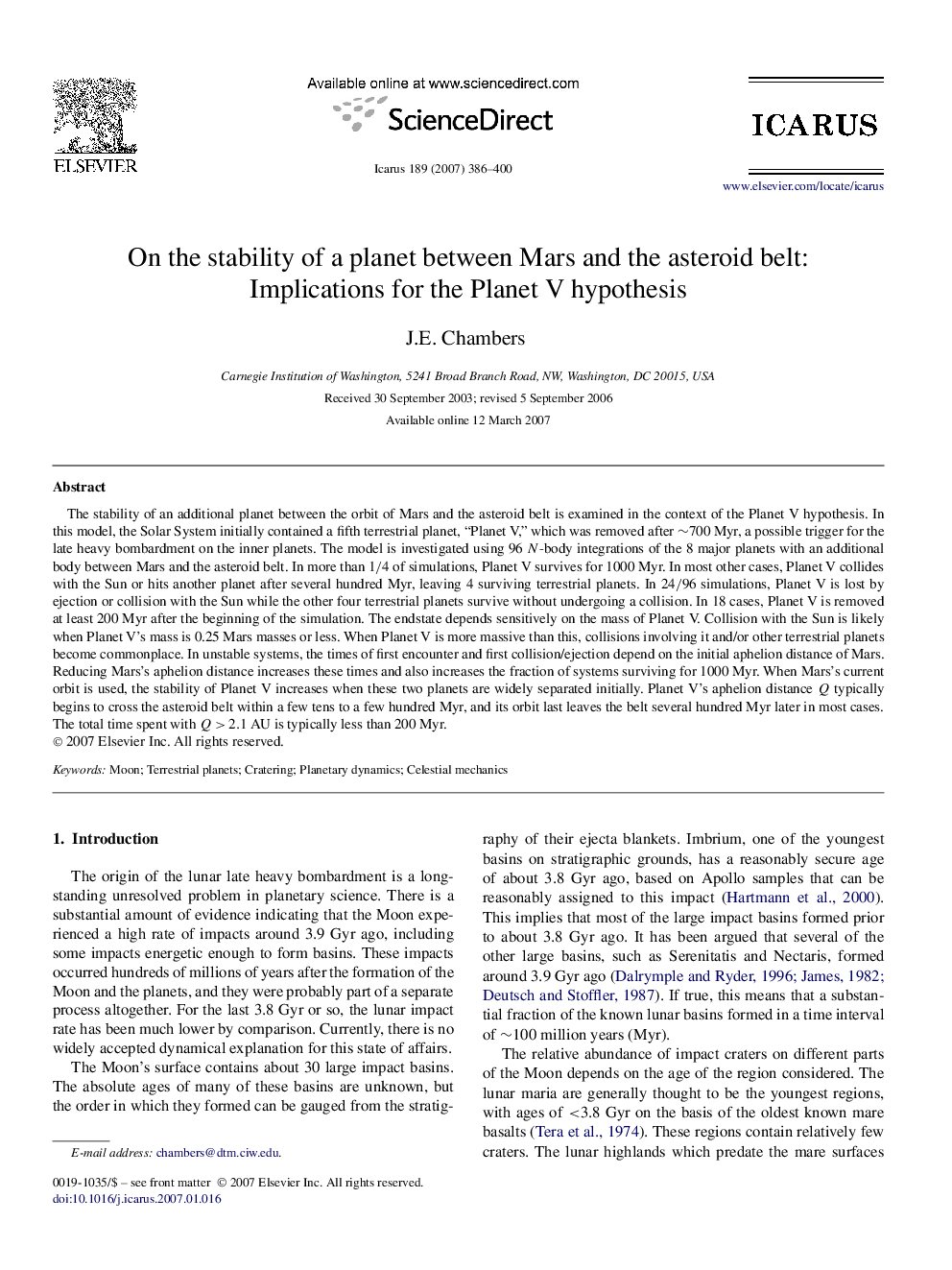| کد مقاله | کد نشریه | سال انتشار | مقاله انگلیسی | نسخه تمام متن |
|---|---|---|---|---|
| 1775655 | 1021202 | 2007 | 15 صفحه PDF | دانلود رایگان |

The stability of an additional planet between the orbit of Mars and the asteroid belt is examined in the context of the Planet V hypothesis. In this model, the Solar System initially contained a fifth terrestrial planet, “Planet V,” which was removed after ∼700 Myr, a possible trigger for the late heavy bombardment on the inner planets. The model is investigated using 96 N-body integrations of the 8 major planets with an additional body between Mars and the asteroid belt. In more than 1/4 of simulations, Planet V survives for 1000 Myr. In most other cases, Planet V collides with the Sun or hits another planet after several hundred Myr, leaving 4 surviving terrestrial planets. In 24/96 simulations, Planet V is lost by ejection or collision with the Sun while the other four terrestrial planets survive without undergoing a collision. In 18 cases, Planet V is removed at least 200 Myr after the beginning of the simulation. The endstate depends sensitively on the mass of Planet V. Collision with the Sun is likely when Planet V's mass is 0.25 Mars masses or less. When Planet V is more massive than this, collisions involving it and/or other terrestrial planets become commonplace. In unstable systems, the times of first encounter and first collision/ejection depend on the initial aphelion distance of Mars. Reducing Mars's aphelion distance increases these times and also increases the fraction of systems surviving for 1000 Myr. When Mars's current orbit is used, the stability of Planet V increases when these two planets are widely separated initially. Planet V's aphelion distance Q typically begins to cross the asteroid belt within a few tens to a few hundred Myr, and its orbit last leaves the belt several hundred Myr later in most cases. The total time spent with Q>2.1 AUQ>2.1 AU is typically less than 200 Myr.
Journal: Icarus - Volume 189, Issue 2, August 2007, Pages 386–400